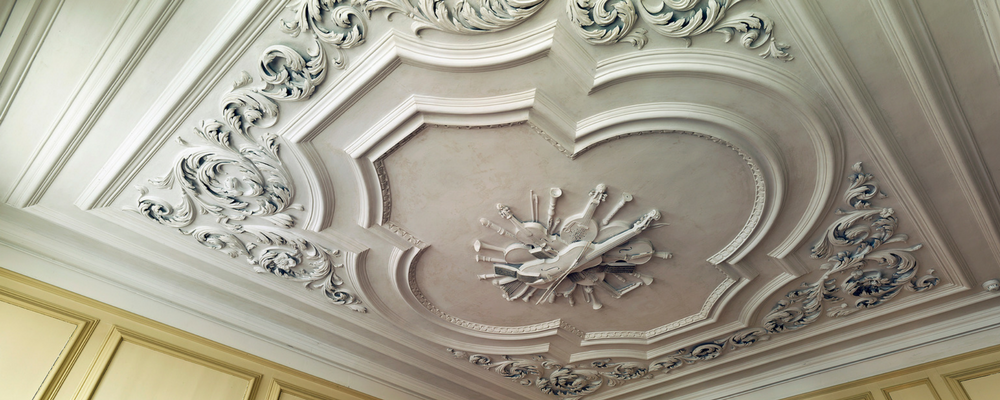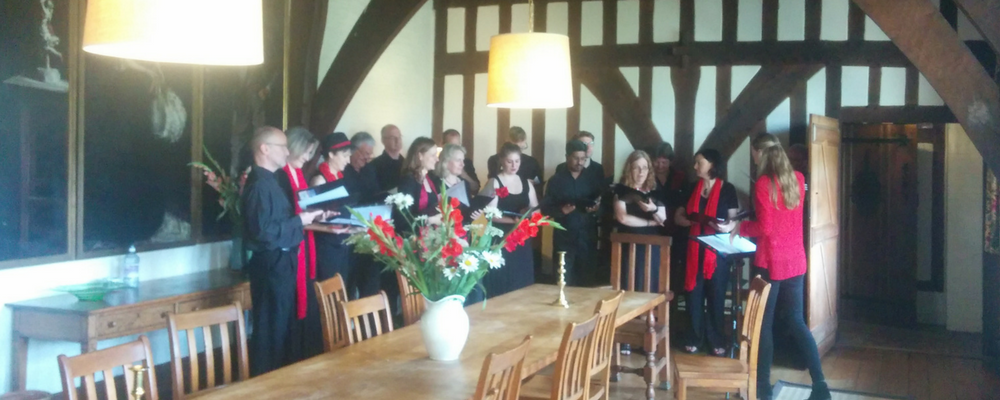There can be few of us who haven’t at some time thought ‘I wish I could travel back in time, just to know what the past was like.’ We can’t, of course, but there are experiences we can share with our ancestors. Toril Brakker, one of our artists in residence at Llwyn Celyn, is exploring one aspect of this thought through nature, in her project ‘What if the Grass Remembers?’, examining the idea that our predecessors delighted in the same plant species growing in the same crevices and pockets of grass as we do today.
For me, the closest thing to time travel is listening to music. Think of it – these sounds, ordered in this way, at this moment. Just as they have been every other time they were played, and sometimes even within these same walls. The unaccompanied human voice, like grass, is still more timeless. Music is a shared enterprise across centuries, given meaning as the memory we all hold together, and cherish through its repetition. Music, in all its forms, is a declared wish to repeat and share the same moment in time over and over again, whether as musical notation on a page with a full orchestra or as a simple lone voice lifted in traditional song. It doesn’t really matter whether it’s live or recorded - a highly produced pop song can so often embody both the present day and nostalgically evoke our own lived experience. But in a period building, performed live as a cantata, or a concerto, or plainsong, music surely carries the truest echo of past lives that mortals can attain.
As a fresh made piece, like the Anthem for Landmark we commissioned from Kerry Andrew for our 50th anniversary in 2015, music can equally mark our own moment in time. And how wonderfully Kerry reinvented Little Wren, a traditional folk tune, in a live performance at a Lengthsman’s Cottage open day. For all its repetition, music is a live thing.
From Martello Tower this year, we were also able to share a particularly intimate moment, thanks to a collaboration with Iestyn Davies, acclaimed international countertenor and keen Landmarker. During this year’s Aldeburgh Festival, Iestyn sang for us Feste’s timeless song from Twelfth Night, The Rain it Raineth Every Day – again with great appositeness to that present moment, for who’d have predicted Aldeburgh would be so stormy on a June day!
So Landmark’s musical connections have been growing, and such musings and enjoyment meant that when selecting a theme for Landmark’s 2017 Engagement activities and open days, music seemed a natural choice. Those attending our open days this year have been able not only to enjoy a wonderful building but also in many cases enjoy free concerts that demonstrated a variety in genre as wide as that in our buildings.
In May 2017, at Cawsey House, Great Torrington, string quartet 4tissimo played 18th-century music beneath a fine early-18th-century plaster ceiling that explicitly celebrates musical excellence.

The New Sussex Singers performed Music for a Summer’s Evening at Wilmington Priory. In June, Nuneaton Folk Club sang traditional folk tunes lustily at Astley Castle: simple folk tunes are often the purest relic of the past, transmitted aurally over centuries. That moated site in deepest Warwickshire will certainly have heard such sounds before. At Goddards in July, there was singing of a different sort from the Pegasus Choir, who gave a foot tapping selection of swing hits such as were enjoyed at many a country house weekend in the 1920s and 30s.

We have one more 2017 open weekend at Woodspring Priory, Somerset where on Sunday 3 December in the afternoon, human voices will once more soar to the fan vaulting of this ancient monastic church, as the Axbridge Singers perform a selection of music for Advent.
And looking further to the future, we are very excited to be sponsoring the Spitalfields Music Festival this December though their use of No 13 Princelet Street as for an artists’ residency and a venue for composer and conductor Andre de Ridder’s imaginative reinvention of Schumann’s iconic song cycle Dichterliebe. Each of the 16 songs will be performed at a different 18th-century Spitalfields house, by an artist drawn from a wide range of stylistic backgrounds including Bengali folk, rap, classical, soul and jazz. It promises to be an unforgettable occasion.
We’re also hoping very much that in autumn 2018, Crownhill Fort, Plymouth might host a specially commissioned choral piece commemorating the end of World War I that could be a stunningly imaginative use of this atmospheric fort… We’ll tell you more as plans develop.
It has long been a pipedream of mine that one day we might be able to offer our Landmark guests a curated play list for each building, just as we offer a curated choice of books. Spotify musicologists take note! But for now, we must leave you to enjoy your own music in Landmarks, and music in Time.